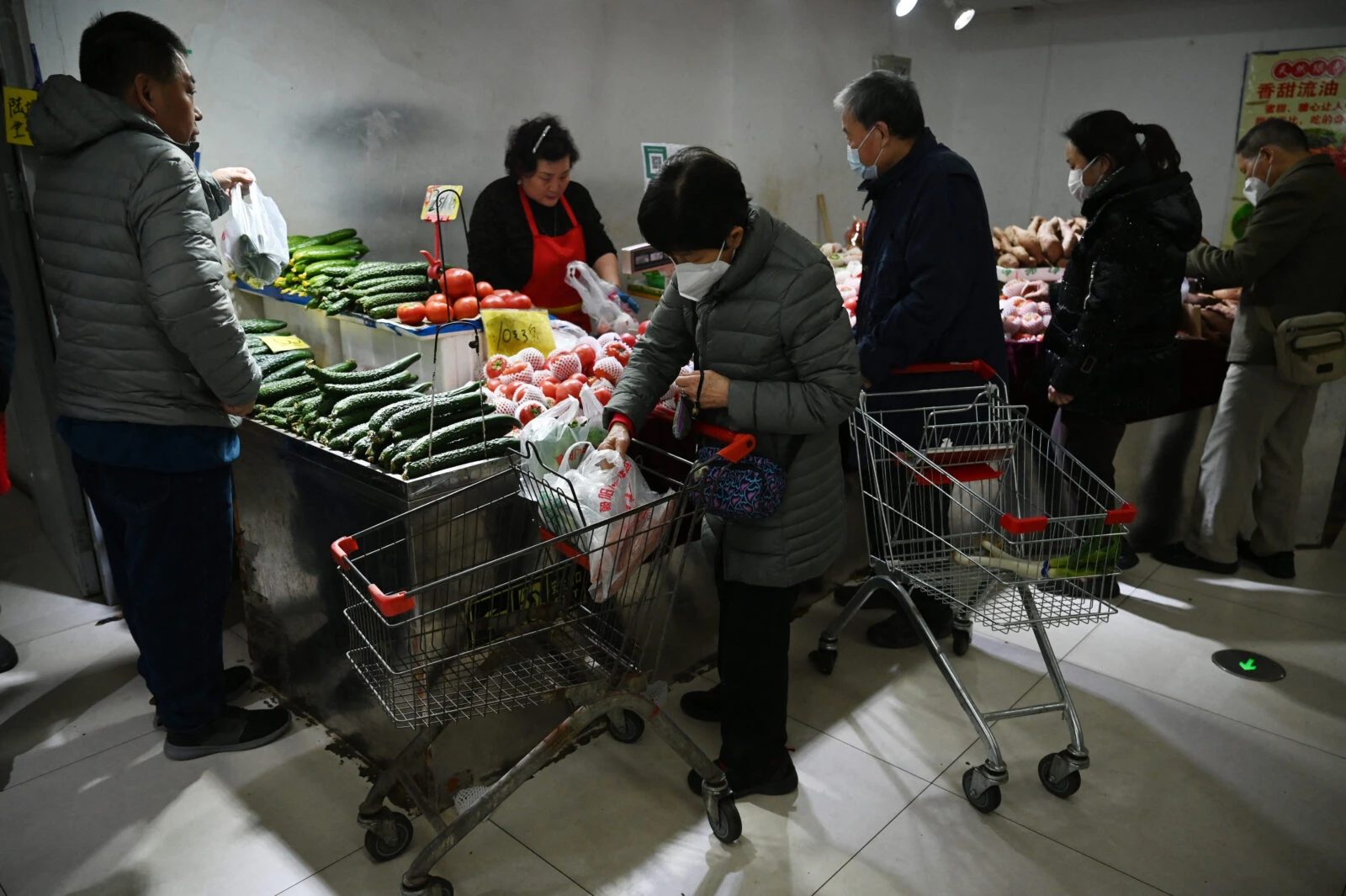China’s deflation, sluggish demand woes persist in February as Trump tariffs loom
 An aerial view shows containers at the port in Nanjing, in China's eastern Jiangsu province on Feb. 4, 2025. (AFP Photo)
An aerial view shows containers at the port in Nanjing, in China's eastern Jiangsu province on Feb. 4, 2025. (AFP Photo)
China’s consumer prices fell last month for the first time in a year, as authorities struggled to revive spending amid growing trade pressures from U.S. tariffs imposed under Donald Trump.
Consumer spending in China has been mired in a slump since the end of the pandemic, fuelling fears of a deflationary spiral. Adding to the pressure is a second term as President Trump, who since taking office in January, slapped sweeping tariffs on Chinese products.
Beijing’s latest retaliatory measures—tariffs targeting U.S. agricultural goods including corn and chickens— are set to take effect on Monday. An intensified trade war will likely mean that China cannot peg its hopes for strong economic growth this year on its exports, which last year reached record highs.

The consumer price index (CPI)—a key measure of inflation— was down 0.7% year-on-year in February, according to data released by the National Bureau of Statistics (NBS). The reading represented a steeper decline than the slump of 0.4% in the index forecast by a Bloomberg survey.
It also reversed the 0.5% uptick recorded in January, when a surge in spending during the Lunar New Year boosted inflation to its highest rate in months.
“This is mainly because of the impact of factors such as the (Lunar New Year) being in a different month, holidays, and price fluctuations of some international staple commodities,” said Dong Lijuan of the NBS in a statement.
The latest figures come as Chinese officials convene in Beijing for the country’s biggest annual political gathering known as the “Two Sessions”.
Declining exports raise concerns over deflationary pressures
Beijing announced on Wednesday the government’s official target of 2% inflation this year, during which leaders hope to get consumers spending again.
“China’s economy still faces deflationary pressure,” wrote Zhiwei Zhang, President and Chief Economist at Pinpoint Asset Management. “As exports face downside risk of a trade war looming, the fiscal policy needs to become more proactive,” he said, adding that “domestic demand remains weak”.
China last year saw exports surge to a record high—a key economic lifeline as persistent woes including slow consumption and a property sector crisis weighed on activity.
Experts say the full impact of a renewed trade war with the United States on China’s economy remains to be seen, but early signs are already emerging. The country’s exports grew 2.3% year-on-year during the first two months of 2025, official data showed Friday, missing expectations and slowing down significantly from the 10.7% growth recorded in December.
At a Wednesday gathering as part of the “Two Sessions”, Premier Li Qiang announced a national growth target of “around 5%” for this year—the same as in 2024. Many economists consider the goal to be ambitious, given the accelerating headwinds facing China’s economy.



